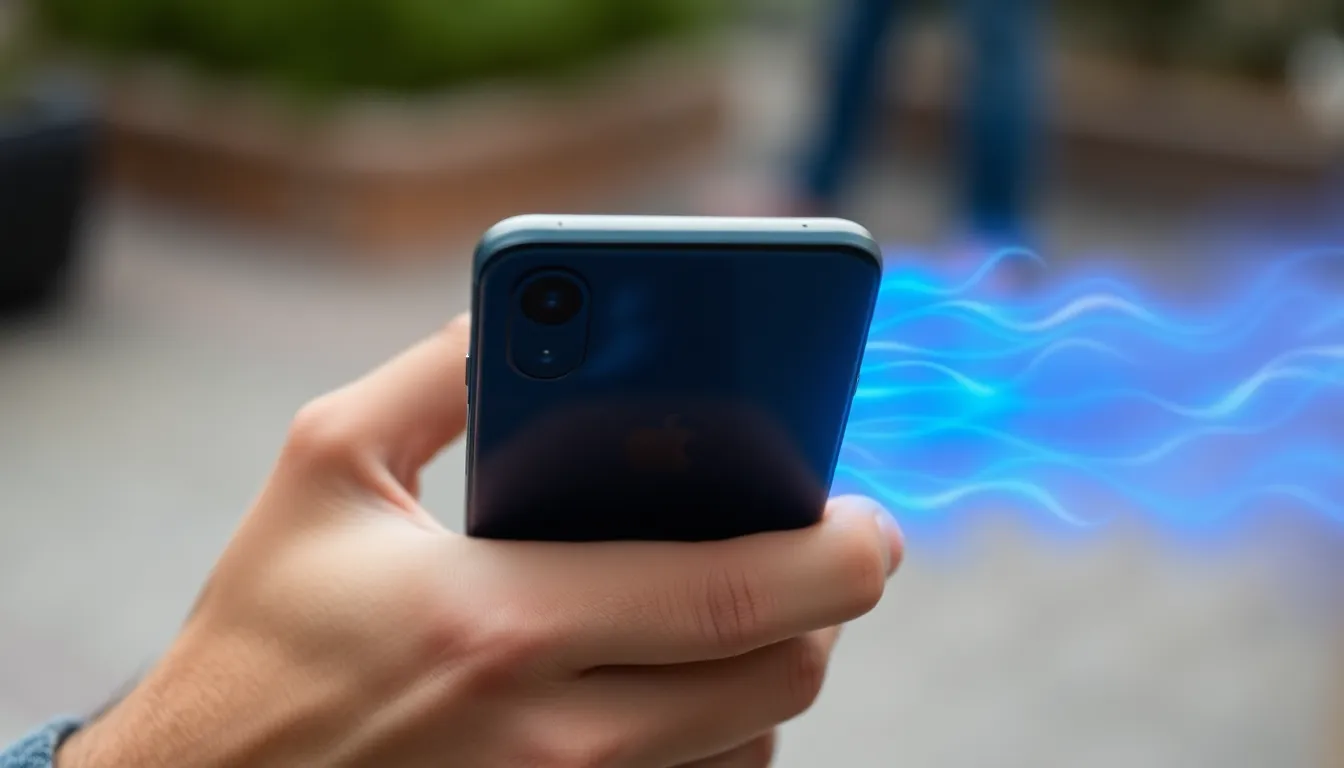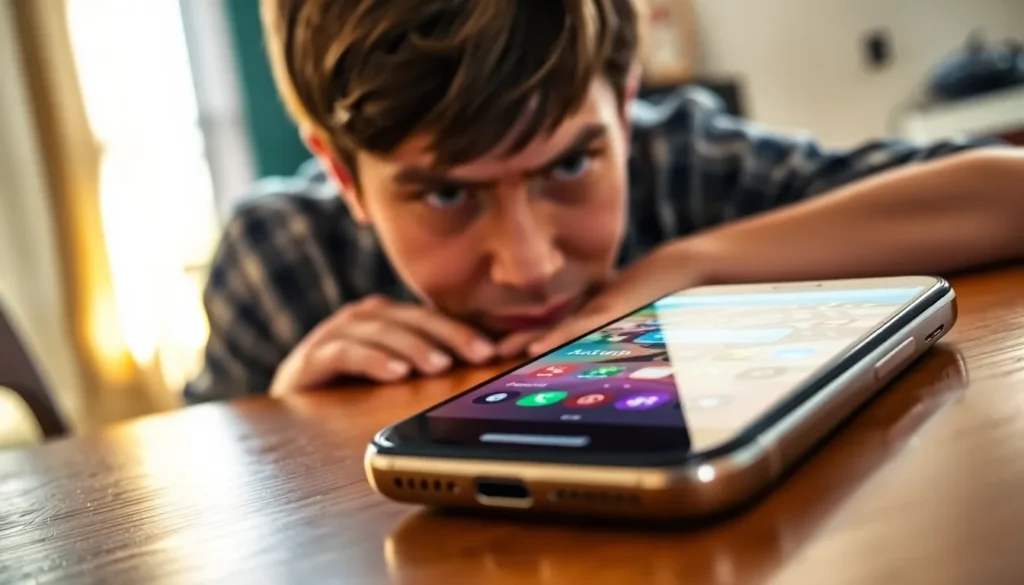Table of Contents
ToggleEver picked up your iPhone only to find it hotter than a summer day in the Sahara? You’re not alone. Many users scratch their heads, wondering why their trusty device is radiating heat like a mini furnace. It’s almost as if it’s trying to send a smoke signal for help.
Understanding why your phone heats up is crucial. It could be anything from demanding apps to a sneaky software update. Ignoring the signs might lead to more than just a sweaty palm; it could affect performance and battery life. So, let’s dive into the reasons behind your iPhone’s toasty temperament and find out how to keep it cool, calm, and collected.
Common Causes Of Overheating
Understanding the common causes of iPhone overheating helps users address this issue effectively. Several factors contribute to excessive heat during device usage.
High Resource Usage
High resource usage often leads to overheating. Intensive applications such as gaming, video streaming, or augmented reality can strain the processor. When multiple apps run simultaneously, the CPU and GPU work harder, generating more heat. Background processes also contribute to increased load. Users should monitor usage patterns to identify apps that cause significant temperature rises.
Ambient Temperature
Ambient temperature plays a crucial role in phone overheating. Using an iPhone in hot environments, such as direct sunlight or inside a parked car, increases its temperature. Elevated external temperatures can hinder the device’s ability to dissipate heat effectively. Additionally, inadequate ventilation while charging exacerbates overheating issues. Keeping iPhones in cooler, well-ventilated areas prevents excessive heat buildup.
Troubleshooting Steps

These steps can help address overheating issues in your iPhone effectively.
Restart Your iPhone
Restarting an iPhone often resolves many performance problems, including overheating. It clears temporary files and closes any unresponsive apps. To restart, hold the lock button and either volume button until the slider appears. Afterward, slide to power off, then hold the lock button again to turn it back on. This simple action refreshes the device and can decrease its temperature significantly. Users generally find that this quick fix can restore normal functionality.
Close Background Apps
Closing background apps can reduce the load on your iPhone, helping to cool it down. Many applications continue running even when not visible, consuming memory and CPU resources. To close apps, swipe up from the bottom and pause in the middle of the screen to access the app switcher. From the app switcher, swipe left or right to locate open apps, then swipe up to close each one. Frequent app management helps minimize overheating caused by high resource usage. Regularly performing this task encourages better performance.
Preventive Measures
Maintaining the optimal temperature of an iPhone is crucial for its performance and longevity. Several methods can help prevent overheating during regular use.
Update Your Software
Updating software ensures that devices receive crucial fixes and optimizations. Apple regularly releases updates that address performance issues and potential bugs contributing to overheating. Users can enable automatic updates in settings to stay current. Updating also includes enhancements for battery management, which helps in reducing excessive heat generation during use. Regular checks for manual updates can provide additional improvements, ensuring the device operates efficiently.
Use Airplane Mode
Activating Airplane Mode can significantly reduce overheating during heavy usage periods. When enabled, this mode disables all wireless connections, including cellular, Wi-Fi, and Bluetooth. Consequently, it allows the iPhone to focus on apps without the added strain of maintaining connections. Users may benefit from activating Airplane Mode while using resource-intensive applications or in areas with weak signals. This practice conserves battery life and limits heat production, promoting a cooler operating temperature.
When To Seek Professional Help
If an iPhone continues to overheat despite troubleshooting, it’s essential to seek professional assistance. Prompt actions can prevent further damage.
Signs of Hardware Issues
Users should watch for specific signs indicating hardware problems. Overheating often comes with performance slowdowns or random shutdowns. Frequent battery drainage may also occur, indicating a possible malfunction. Additionally, unusual sounds like clicking or buzzing can signal internal issues. Cracked screens or damaged ports can further exacerbate overheating. If any of these symptoms appear, considering professional help is advisable.
Finding a Service Center
Locating a certified service center ensures reliable repairs for overheating issues. Apple’s official website lists authorized service providers. Alternatively, users can visit an Apple Store for direct access to technicians. Checking reviews and ratings for local repair shops can guide selections. Scheduling a diagnostic appointment helps identify specific problems. Receiving guidance from professionals enables effective solutions that address root causes of overheating.
iPhone overheating can be a frustrating experience but understanding the causes and solutions can make a significant difference. By monitoring app usage and keeping the device in cooler environments users can prevent excessive heat buildup. Regularly updating software and employing features like Airplane Mode during intensive tasks can also help maintain optimal temperatures.
If overheating persists despite these efforts it’s crucial to seek professional assistance. Identifying potential hardware issues early can prevent further complications. By taking proactive steps and staying informed users can enjoy a smoother and cooler iPhone experience.




